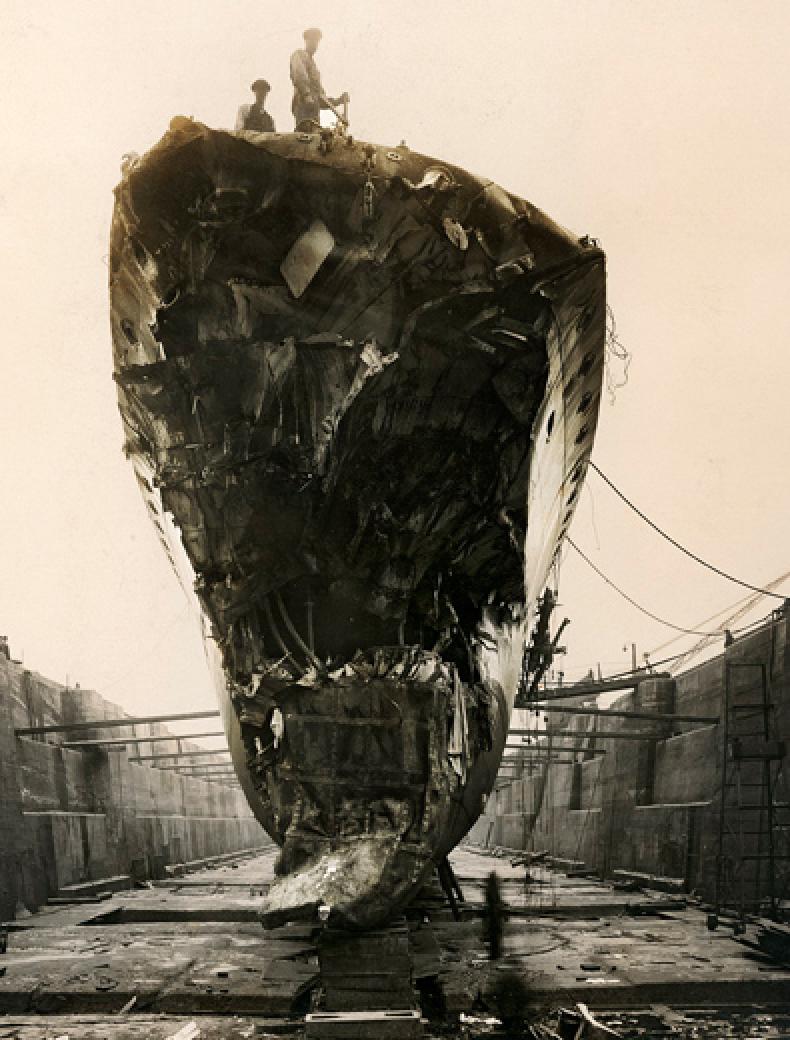The continent of Antarctica is huge with a lot of water between
it and its neighbouring lands. Until the class of 1911
destroyers, the Antarctican Navy had built what had been harbour
defence vessels - torpedo boats, and left the protection of the
capital ships to the cruisers, scout, light and armoured. As the
torpedo boat destroyers became more capable then the ships to
combat them also had to be bigger, and be able to act with the
fleet. Antarctican destroyers had to be big to be able to have
the coal bunkers (later oil stowage) to give the range to act
with the fleet. The previous classes did not make it to WW2
having been sold, discarded and/or scrapped before 1935. (It was
not uncommon for old ships to be discarded/sunk by being used as
target ships - a few large shell hits would sink them.)
The Gem class was the last pre-war destroyers completed. That
means they had a bit more time taken on them to ensure that
everything was as good as could be. This meant that while some
of the war built destroyers were falling apart from the hard
usage they had had, the Gem Class were still in good order.
Though, by the time the ten remaining ships made it to WW2 they
had become long range escorts. The Navy could see the war
coming, Japan, Germany and Italy were spoiling for a fight and
from 1935 it was when not if. The last war had proved how the
submarine could be used to blockade lands and interdict trade.
The strategy that had worked to combat the submarine was the
'Convoy' with lots of escorts to protect them. The trick was to
be able to get escorts that could take on a submerged submarine
and have the range to stay with the convoy through its voyage.
Advances in submarine detection during the later 1930's gave the
escorts the chance to locate a submarine, but until better
anti-submarine weapons were produced in the early 1940's
(Hedgehog etc) the chance of successfully attacking and sinking
a submarine was as low as 20%. Escorts could be away from a
convoy for days hunting a submarine with no 'kill' to show for
their efforts. Those escorts then had to turn round and catch up
to the convoy. Tactics got better as did the electronic aids to
locate submarines, so that with better weapons the kill ratio
went up to 70%. It was the Germans that came up with the
'better' submarine the
Type
XXI U-boat. It was
fortunate for the Allies that these submarines came too late to
have the impact on the war they could have had.
During the mid 1930's the ten remaining ships of the class were
rebuilt into long range Escorts. To obtain the long range the
forward boiler room was removed and the space turned into an
extra fuel tank. Speed reduced to 26 knots which was considered
more than enough. The range almost doubled with the engines
being converted to oil firing and with the extra bunker space.
Two of the 4" low angle guns were replaced with dual purpose 4".
The centre 4" was replaced with a twin 2 pounder mounting. The
old 2 pounder AA were kept. One bank of torpedoes was removed to
allow for more depth charge stowage.
| Displacement | 1,200 tons standard, 1,425 tons full load | |
| Length | 313 ft | |
| Breadth | 34 ft | |
| Draught | 12 ft | |
| Machinery | 2 shaft, steam turbines, 26,000shp (18,000shp LRE) | |
| Speed | 32 knots (26 knots LRE) | |
| Range | 5,000 miles at 10 knots (8,000 miles at 12 knots) | |
| Armament | As completed 3 x 4" (3x1) 4 x 2pd (4x1) |
Long range Escort 2 x 4" DP (2x1) 6 x 2pd AA (1x2, 4x1) |
| Torpedoes | 6 x 18" (2x3) | 3 x 18" (1x3) |
| Complement | 115 | 125 |
| Notes | Sapphire Amethyst Topaz Aquamarine Ruby Diamond Emerald Alexandrite Beryl Jasper Tourmaline Sardonyx |
|
ANS Topaz after ramming a German destroyer in 1917.
